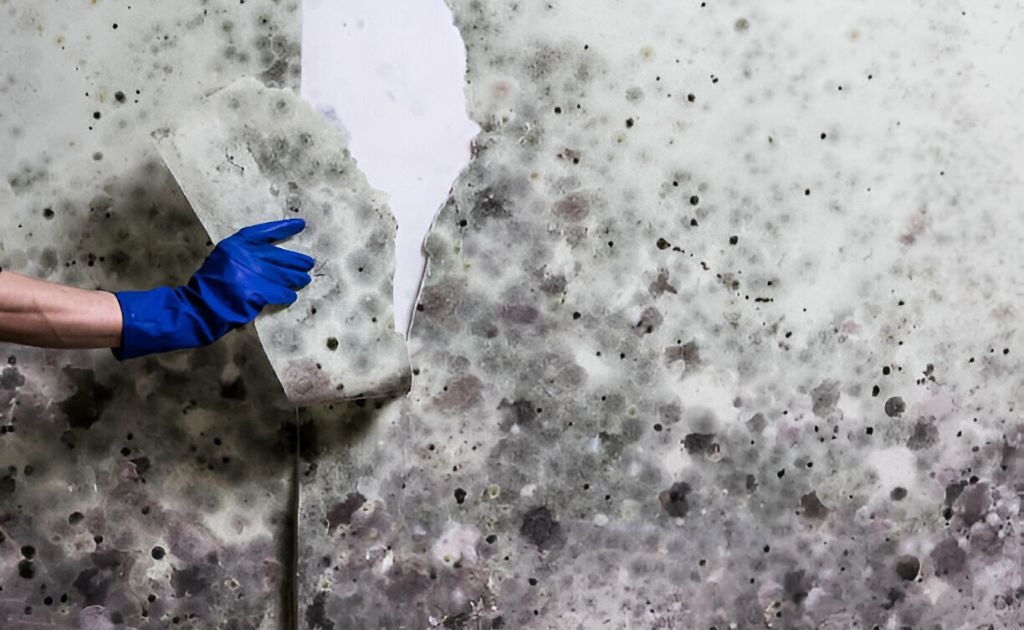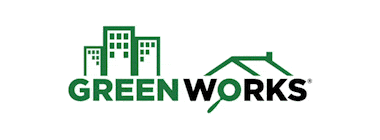Posts

How to Remove Mold from Different Surfaces?
Getting your property tested for mold is not just the last step; you also need to get that identified mold removed. Mold removal is an important process as it affects not only the health but also the structural integrity. Its threats go beyond the visible signs, especially if you have respiratory issues or a weakened immune system. Also, the mold tests stir up mold spores into the air, which is a hazard of its own that you or your loved ones can breathe in, making the health issues worse. Plus, if you leave mold alone, it can have a worse effect on the building, making its walls, floors, and ceilings weak. So, it’s fair to say that getting rid of mold right after testing isn’t just a following step. Instead, it is a preventative measure that you shall never miss.
Different surfaces require different mold removal methods, let’s have a look at each of those.
Mold Removal Methods for Various Surfaces
How to Get Rid of Mold on Walls?
If the mold is identified on the walls, then there might be some potential structural damage. So, in this case, it’s better to call a professional to handle the removal. But if you plan on removing the mold yourself, that’s fine, too. You need to be sure that you collect all moldy insulation and drywall in heavy-duty trash bags and are aware of how to dispose of them off the property. Also, when dealing with mold, don’t forget to wear the following:
- Safety goggles
- Protective face masks
- Rubber gloves
For Porous Walls (concrete, drywall, etc.)
Firstly, ensure you wear protective gear. Prepare a solution by mixing 1 part bleach with 3 parts water in a bucket. Alternatively, opt for a 3% concentration of hydrogen peroxide. Apply the peroxide by spraying it onto the affected wall, allowing it to sit for 10–15 minutes. Next, scrub the moldy area with a soft-bristled brush to eliminate the mold. Apply the bleach solution or peroxide to the affected wall using a sponge or mop for larger surfaces, ensuring that it does not overly saturate the area. Finally, allow the solution to air dry naturally.
For Wallpapered Walls
To protect your wallpaper from damage, choose natural remedies like:
- Tea tree oil
- Grapefruit seed extract
- Vinegar
Mix 1 teaspoon of your chosen essential oil with each cup of water or as an alternative, you can combine equal parts white vinegar and warm water. Fill your spray bottle with the cleaning solution and apply it evenly onto the moldy wallpaper. Gently scrub the affected areas with a soft-bristle brush in circular motions until the mold is removed. Make sure that you don’t over-saturate the wallpaper during cleaning. Once you’re done, let the wallpaper to air dry thoroughly.
How to Get Rid of Mold In the Shower?
For Fiberglass Showers
You may start by soaking a rag in a solution of hydrogen peroxide diluted with two parts water. Make sure you cover the entire fiberglass shower thoroughly. Leave the solution to sit overnight as this will break down mold and mildew. The following day, rinse the fiberglass shower, you may use hot water for this to remove any remaining residue. Later, use a squeegee to clear away lingering water droplets that will give a streak-free finish. Finally, polish the surface dry using a microfiber rag to ensure a pristine appearance.
For Shower Grout
First, create a cleaning solution by mixing equal parts of white vinegar and water in a spray bottle. Liberally spray the affected grout lines with the solution and ensure no grout area is left. Let the vinegar solution sit for approximately 10-15 minutes, allowing it to penetrate through the mold. Next, scrub the grout lines with a stiff-bristled brush. Here, focus on areas with visible mold growth. Rinse the grout thoroughly with water to remove any remaining residue.
How to Get Rid of Mold In the Bathroom?
For Bathroom Ceiling and Walls
First, identify the source of moisture, whether it’s a leak or excessive humidity. Ventilate the area by turning on fans and opening windows to help in drying. In a spray bottle, prepare a solution of vinegar and water and apply it to the moldy spots. If the walls and ceilings are painted or finished then you need to gently scrub the affected areas with a soft-bristle brush. However, if your ceiling and walls are unfinished, you may need to get professional help, as it might require scraping and refinishing. Repeat the spraying and scrubbing process until the mold is completely removed. Finally, let the vinegar solution to air dry, followed by a thorough cleanup.
For Tiled Bathroom Wall
The best way to clean mold from tiled walls is making a mixture of vinegar and warm water; the ratio needs to be 1:1. Spray the solution onto the affected area and let it sit for 5–10 minutes. After that, scrub the mold and cleaning solution using a soft-bristle scrub brush or sponge and allow it to air dry. If the grout is moldy, make a paste with baking soda and a small amount of water. Apply the paste to the grout and let it sit for a few minutes. This should be followed by scrubbing with an old toothbrush to get into the small nooks and crannies. Repeat the process as necessary to ensure the grout is thoroughly cleaned.
How to Get Rid of Mold on Wood?
For Interior Wood
First, put on your protective gear. Use a vacuum with a HEPA filter to vacuum all visible mold from the wood surface, and immediately clean out or dispose of the vacuum bag or container. For painted or sealed wood, mix a few drops of dish soap, such as Dawn, with warm water, and scrub the moldy area with a soft-bristle brush, being careful not to saturate the wood. Use a sponge to remove any excess water. Next, fill a spray bottle with white vinegar and lightly spray the affected surface, allowing the vinegar to air dry on the wood for about an hour. If the mold is gone, finish the wood with a commercially available wood cleaner. For unsealed wood, mix ½ cup of chlorine bleach with 1 cup of warm water, apply it to the mold with your scrub brush, and let it air dry. If the mold persists, it may be deeply embedded in the wood. In this case, consider sanding and refinishing the piece to fully eliminate the mold, ensuring to use of a sealant afterward to prevent further damage.
For Exterior Wood
To remove mold from exterior wood, the very first thing you need to do is protect yourself. You shall wear protective gear to protect yourself against mold spores. Make sure to wear the following:
- Gloves
- Mask
- Safety goggles
Next, you need to sweep off any loose mold and debris with a broom or brush. Prepare a cleaning solution by mixing one cup of oxygen bleach with one gallon of water. Apply the solution generously to the affected areas using a garden sprayer or a brush, and let it sit for about 15 minutes. Scrub the wood thoroughly with a stiff-bristle brush to remove the mold, then rinse the area with clean water. Allow the wood to air dry completely. If the mold persists and is still not removed, you may repeat the process. You can also consider using a commercial mold remover that is specifically designed for exterior use. Besides this, regular maintenance and sealing of the wood can also help prevent future mold growth.
How to Remove Mold from Clothes?
For Cotton Clothes
To remove mold from cotton clothes, brush off the mold outside. Soak the clothes in a solution of one cup of white vinegar and one gallon of water for an hour. Pre-treat any remaining stains, then machine wash in hot water with detergent, adding a cup of vinegar to the rinse cycle. Finally, dry the clothes thoroughly in direct sunlight.
For Silk
Brush off surface mold outside. Hand wash the garment in lukewarm water with gentle detergent and a bit of white vinegar. Rinse thoroughly, gently press out excess water, and air dry flat away from sunlight to prevent damage.
For Synthetic Fabrics
After brushing it off outdoors, machine wash the fabric in warm water using a regular detergent. Add one cup of white vinegar to the wash cycle to help kill mold and remove odors. After washing, air dry the fabric outdoors or in a well-ventilated area. If the mold persists, repeat the washing process or consider using a commercial mold remover specifically designed for synthetic fabrics.
How to Remove Mold From Carpets?
For Synthetic Carpets (Nylon, Polyester, Olefin)
Vacuum the carpet thoroughly to remove any loose mold spores. Clean with a mixture of mild detergent and water using a carpet cleaning machine or steam cleaner. Ensure the carpet dries completely to prevent mold regrowth.
For Wool Carpets
Wool carpets are more susceptible to mold growth due to their organic fibers. Start by vacuuming the carpet to remove surface mold. Clean with a mixture of mild detergent and water, using a gentle brushing motion to avoid damaging the fibers. Allow the carpet to dry completely, preferably in a well-ventilated area.
For Cotton Carpets
Cotton carpets are also prone to mold growth, especially in humid environments. Vacuum the carpet to remove surface mold. Clean with a mixture of mild detergent and water using a soft-bristled brush or sponge. Ensure thorough drying to prevent mold regrowth.
How to Remove Mold from Leather?
For Finished Leather
To remove mold from finished leather, take the item to a well-ventilated area and brush off any loose mold with a soft-bristled brush or cloth. Next, mix a mild detergent with water to create a gentle cleaning solution. Dampen a soft cloth or sponge with the solution and gently wipe the moldy areas of the leather, being careful not to use excessive water. After cleaning, rinse away any soapy residue with a clean, damp cloth, then thoroughly dry the leather with a clean, dry cloth. Once dry, apply a leather conditioner to restore moisture and protect the finish. To prevent future mold growth, store the leather item in a cool, dry place away from moisture and humidity, and consider using a leather protector or conditioner regularly.
For Unfinished Leather
First, take the leather item to a well-ventilated area and gently brush off any surface mold with a soft-bristled brush or cloth. Next, mix equal parts of white vinegar and water in a spray bottle and lightly mist the affected areas. Allow the vinegar solution to kill mold spores for a few minutes. Then, gently wipe away the mold and vinegar residue using a clean, damp cloth. Be careful not to saturate the leather with too much liquid. Once the mold is removed, thoroughly dry the leather with a clean cloth. Finally, apply a leather conditioner to restore moisture and protect the leather. Store the leather item in a cool, dry place away from moisture and humidity to prevent future mold growth.
Conclusion
Effectively removing mold from different surfaces requires a comprehensive approach to ensure thorough cleaning and prevent future growth. Whether tackling mold on walls, carpets, fabrics, or leather, needs prompt action and proper techniques. By employing the appropriate cleaning methods and taking preventive measures, such as controlling moisture levels and ventilation, you can successfully eliminate mold and maintain a healthy living environment. Remember, safety precautions, like wearing protective gear and consulting professionals for severe cases, are important steps in achieving mold-free surfaces and promoting overall well-being.
Ready to ensure your home is mold-free? Contact GreenWorks Inspections today for comprehensive mold inspections and peace of mind. Our experienced team uses advanced techniques to identify and address mold issues, safeguarding your property and your health. Don’t let mold go unnoticed—schedule your inspection now and breathe easier in your home.



